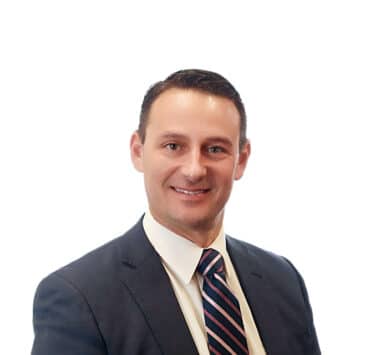|
Getting your Trinity Audio player ready...
|
Never losing sight of the mission. Creating more seamless processes for patients. Coming to terms with the long-term potential of telehealth.
These were just some of the topics discussed on March 18 at “Healthcare’s Pivot,” a virtual event hosted by American Healthcare Leader that featured CHOC’s chief information officer and magazine cover star John Henderson as the lead speaker. Henderson spoke with AHL Managing Editor KC Esper about healthcare technology solutions, the rise of telehealth, and more.
Here are five key takeaways from their discussion.
- Focus on the Mission
Healthcare was a complex industry prior to COVID-19, and the pandemic forced hospitals across the country to deal with even higher volumes of complicated matters. To see through that complexity, keeping sight of the hospital’s mission and doing whatever it takes to serve patients and families must be at the crux of everything employees do, Henderson said.
“The work that we do from a technology perspective is really in support and service to that mission,” he said.
Henderson noted how CHOC does its best to continue the types of activities that are deeply appreciated by patients, especially long-term patients who often miss many of the normal activities they would be doing if they weren’t in the hospital, such as prom.
“We had to make some adjustments to that, but we try to make sure we create those different types of connections and types of events to really put people at ease, particularly if you’re going to be in our inpatient unit for a while,” he said.
Creating a Seamless Process
Throughout the pandemic, CHOC has continued to focus on the digital and patient experiences. Henderson and his team were already invested in a strategy to improve the inpatient experience through digital technologies prior to the pandemic and have tried to accelerate that strategy. He noted that, for example, the hospital has many millennial and Generation X parents who want to do everything through their mobile smartphones or iPads. He pointed to digital pre-visit questionnaires as a great way to create a smoother experience.
“The technologies that we’re introducing are really designed to meet them where they are,” he said. “We’re excited about getting those things going, and getting a pre-visit questionnaire informs how much [you can] do before you come in. You limit the amount of time in the facility, [so when] you get there, you can be seen by your provider, and the visit can really be focused on the care and not you filling out a clipboard—forms that you filled out probably a thousand times before, if it’s not your first visit. [We’re] really wanting to minimize those types of things and make it seamless and frictionless for our patients’ families.”
- The Rise of Telehealth
CHOC “really took off with telehealth” during the pandemic, going from maybe two hundred visits a year to six hundred a day, Henderson said. He noted that the hospital has leveled out to around 360 visits per day, but telehealth will continue to be a core part of the hospital’s delivery model. Moving forward, CHOC will remain focused on Orange County, but the hospital does want to be the leading destination for children’s health regardless of boundaries, according to Henderson.
“[The pandemic has] really exposed the lack of health equity across the country for the poor and the working poor,” he said, adding that “telehealth can be a tremendous equalizer.”
“From your social economic status, if you don’t have access to those technologies, we have to figure out how do we get those technologies in their hands so they can get the care that they need and achieve that health equity that’s missing across the country,” he said.
- Treat People as Individuals
Like so many of his executive peers, Henderson had to get creative in managing a remote workforce. He found that engagement and treating people as individuals has been critical to remote work success. Also, flexibility is key, as situations and circumstances can change regularly, so leaders must be prepared to make different decisions.
“I think sometimes leaders get caught up in ‘I have to be consistent. I can’t make a decision and then change course three weeks from now or three months from now,’” Henderson said. “I think you actually owe it to yourself, to your organization, to actually think through that and a lot of times the right decision is to take a different path.”
- The Future of Health
Henderson is feeling excited and hopeful about the future of health. The pandemic has transformed the healthcare industry, and some changes might not go away, Henderson said. He pointed out how technology can be leveraged to provide better care and he believes that will be here to stay. The challenge, he said, will be to look at care in a more cohesive manner and not just throw technology at challenges. Instead, industry professionals must be thoughtful about what makes sense for their organizations, he advised.
“I’m excited about continuing telehealth,” Henderson said. “I’m excited about really creating a truly integrated clinical digital ecosystem. Creating that more consumer technology-based approach [is] going to be critical. I mentioned health equity. I’m hopeful that everything we’ve learned, we’ll be able to transition that into just what we offer across the board, regardless of your socioeconomic status.”
Want to learn more? Check out the insights Henderson shared during the Q&A!

